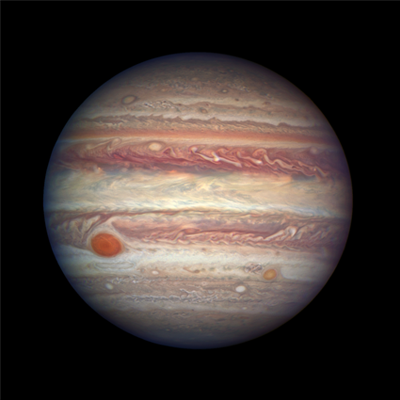Hubble snaps close-up of Jupiter

Cool image time! The Hubble Space Telescope has taken a magnificent global view of Jupiter. The image on the right is only a thumbnail. Make sure to go to the link to see the full image, which amazingly compares quite favorably with the images being sent down by Juno in orbit around the gas giant.
This Hubble image once again demonstrates the remarkable advantages of an optical telescope in space. Equipped with the right instruments, it could do much of the research now being done by the planetary missions, and do it from Earth orbit.The research possibilities and the knowledge revealed from the ability to see things clearly in the optical bands is truly endless.
Even more important, we are wired to what we see. Give us a good visual image and many questions can immediately be answered.

Cool image time! The Hubble Space Telescope has taken a magnificent global view of Jupiter. The image on the right is only a thumbnail. Make sure to go to the link to see the full image, which amazingly compares quite favorably with the images being sent down by Juno in orbit around the gas giant.
This Hubble image once again demonstrates the remarkable advantages of an optical telescope in space. Equipped with the right instruments, it could do much of the research now being done by the planetary missions, and do it from Earth orbit.The research possibilities and the knowledge revealed from the ability to see things clearly in the optical bands is truly endless.
Even more important, we are wired to what we see. Give us a good visual image and many questions can immediately be answered.
